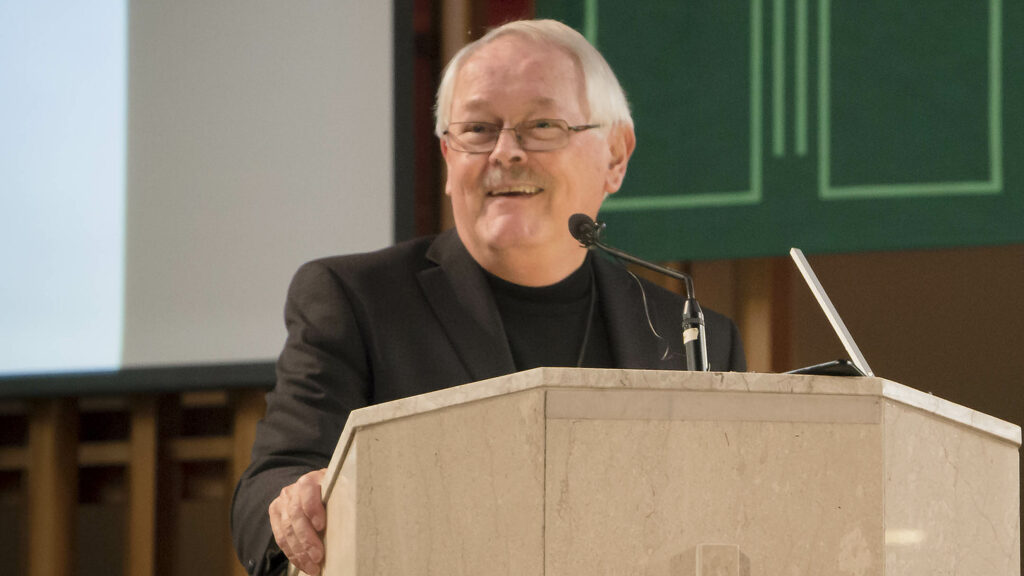Pierre Teilhard de Chardin was once asked by a critic: “What are you trying to do? Why all this talk about atoms and molecules when you are speaking about Jesus Christ?” His answer: I am trying to formulate a Christology large enough to incorporate Christ because Christ is not just an anthropological event but a cosmic phenomenon as well.
In essence, what he is saying is that Christ did not come just to save human beings; he came to save the earth as well.
That insight is particularly relevant when we try to understand all that is implied in the resurrection of Jesus. Jesus was raised from death to life. A body is a physical reality so when it raised up as a body (and not just as a soul) there is something in that which is more than merely spiritual and psychological. There is something radically physical in this. When a dead body is raised to new life, atoms and molecules are being rearranged. The resurrection is about more than something changing inside of human consciousness.
The resurrection is the basis for human hope, surely; without it, we could not hope for any future that includes anything beyond the rather asphyxiating limits of this life. In the resurrection of Jesus, we are given a new future, one beyond our life here. However, the resurrection also gives a new future to the earth, our physical planet. Christ came to save the earth, not just the persons living on it. His resurrection ensures a new future for the earth as well as for its inhabitants
The earth, like ourselves, needs saving. From what? For what?
In a proper Christian understanding of things, the earth is not just a stage for human beings, a thing with no value in itself, apart from us. Like humanity, it too is God’s work of art, God’s child. Indeed, the physical earth is our mother, the matrix from which we all spring. In the end, we are not apart from the natural world; rather we are that part of the natural world that has become conscious of itself. We do not stand apart from the earth and it does not exist simply for our benefit, like a stage for the actor, to be abandoned once the play is over. Physical creation has value in itself, independent of us. We need to recognize that, and not only to practice better eco-ethics so that the earth can continue to provide air, water, and food for future generations of human beings. We need to recognize the intrinsic value of the earth. It is also God’s work of art, is our biological mother, and it is destined to share eternity with us.
Moreover, like us, it is also subject to decay. It too is time-bound, mortal, and dying. Outside of an intervention from the outside, it has no future. Science has long taught the law of entropy. Put simply, that law states that the energy in our universe is running down, the sun is burning out. The years our earth has before it, like our own days, are numbered, counted, finite. It will take millions of years, but finitude is finitude. There will be an end to the earth, as we know it, just as there will be an end to each of us as we live now. Outside of some re-creation from the outside, both the earth and the humans living on it have no future.
St. Paul teaches this explicitly in the Epistle to the Romans where he tells us that creation, the physical cosmos, is subject to futility, and that it is groaning and longing to be set free to enjoy the glorious liberty of the children of God. St. Paul assures us that the earth will enjoy the same future as human beings, resurrection, transformation beyond our present imagination, an eternal future.
How will the earth be transformed? It will be transformed in the same way we are, through resurrection. The resurrection brings into our world, spiritually and physically, a new power, a new arrangement of things, a new hope, something so radical (and physical) that it can only be compared to what happened at the initial creation when the atoms and the molecules of this universe were created out of nothingness by God. In that initial creation, nature was formed and its reality and laws shaped everything from then until the resurrection of Jesus.
However, in the resurrection, something new happened that touched every aspect of the universe, from the soul and psyche inside every man and woman to the inner core of every atom and molecule. It is no accident that the world measures time by that event. We are in the year 2021 since that radical re-creation happened.
The resurrection was not only spiritual. In it, the physical atoms of the universe were rearranged. Teilhard was right. We need a vision wide enough to incorporate the cosmic dimension of Christ. The resurrection is about people, and the planet.

